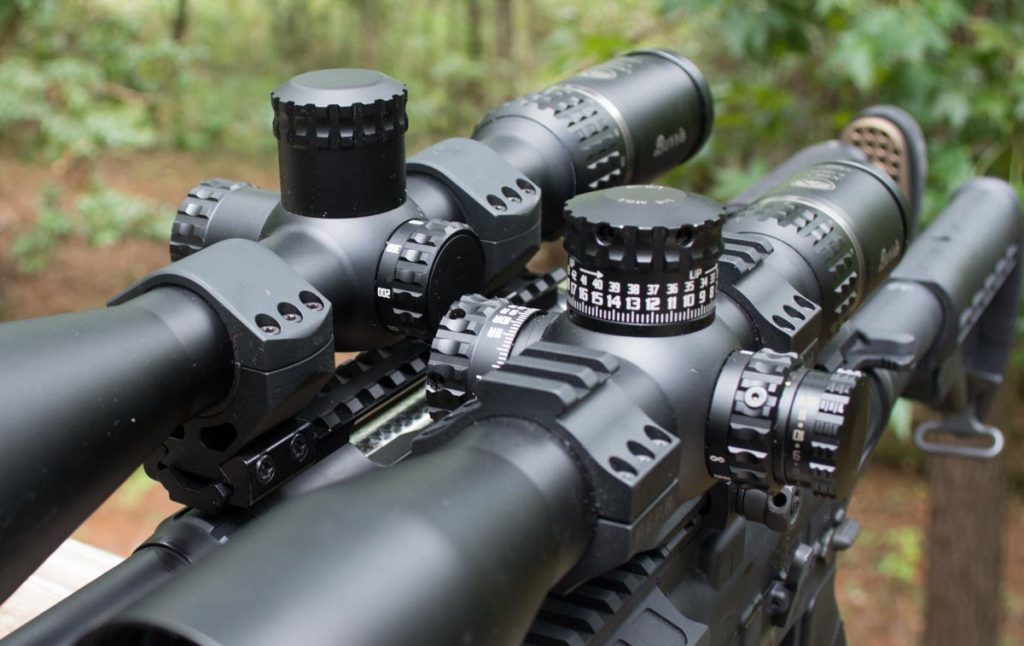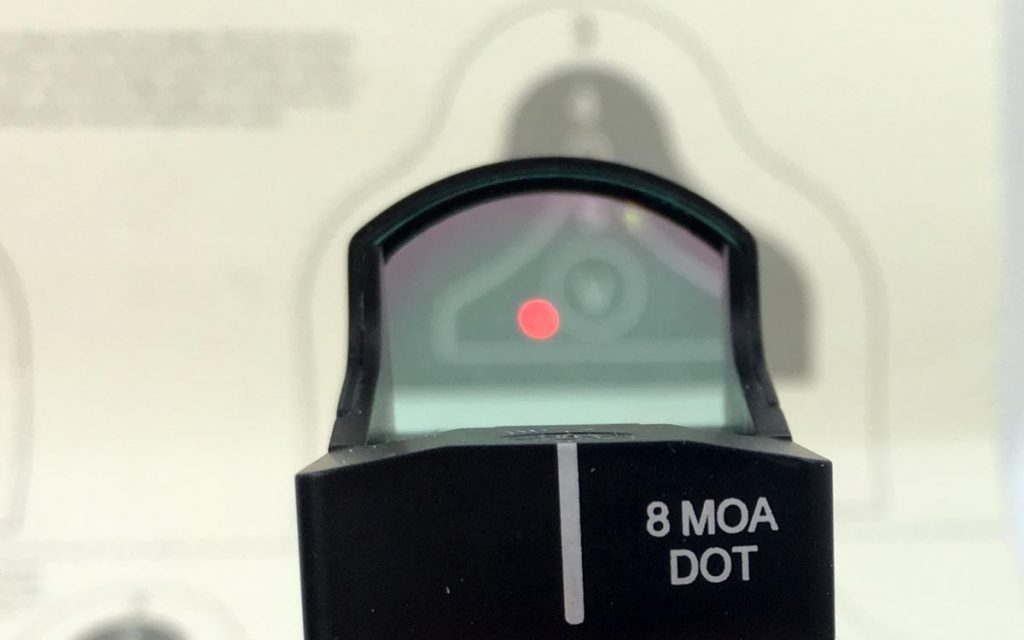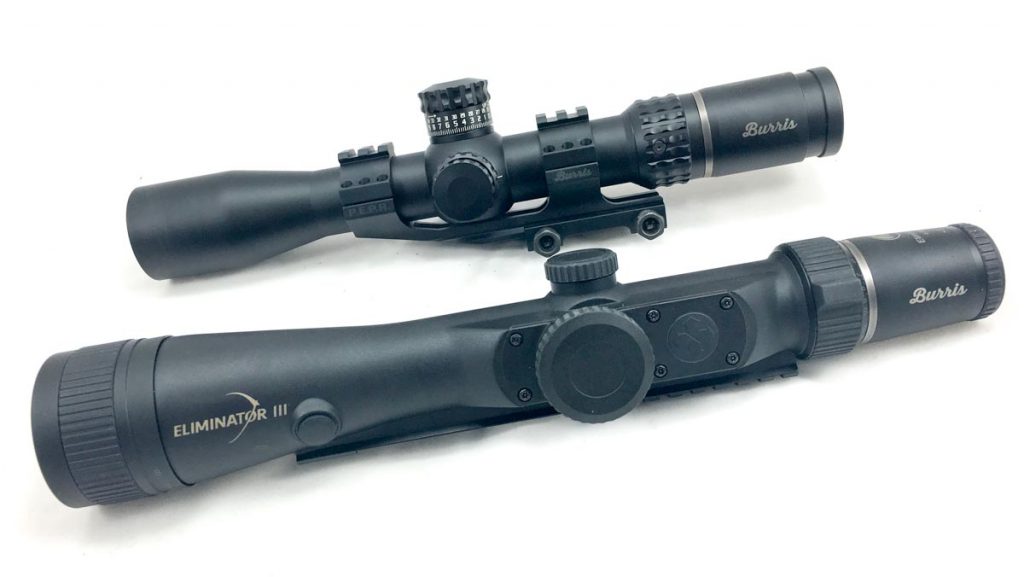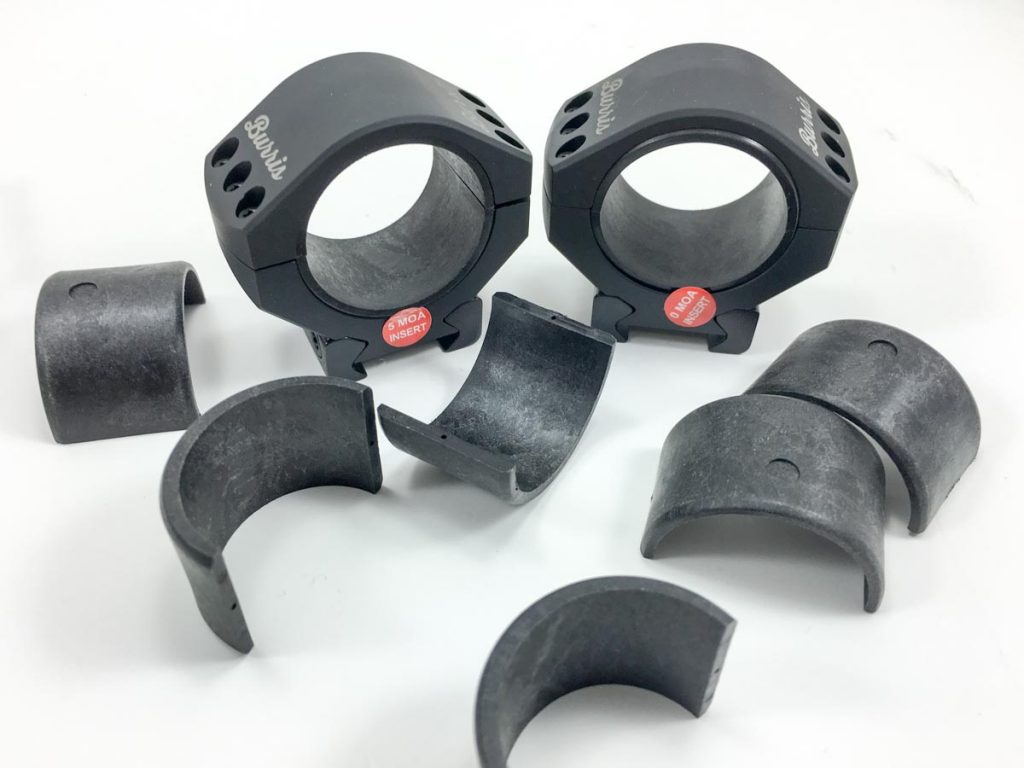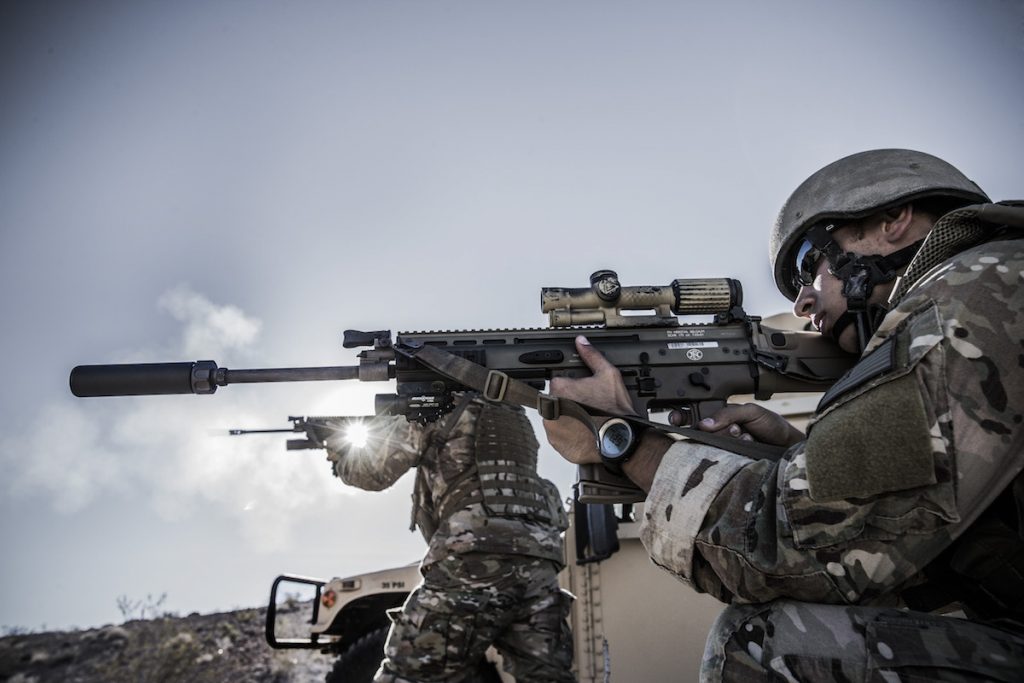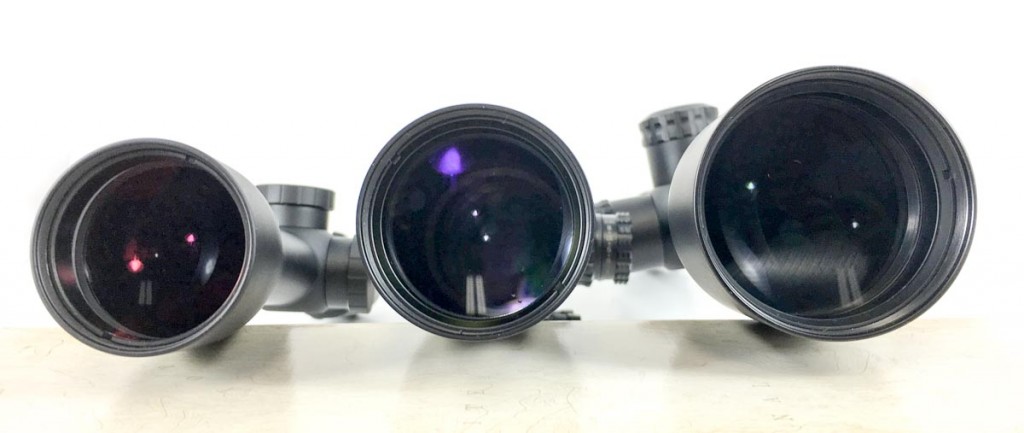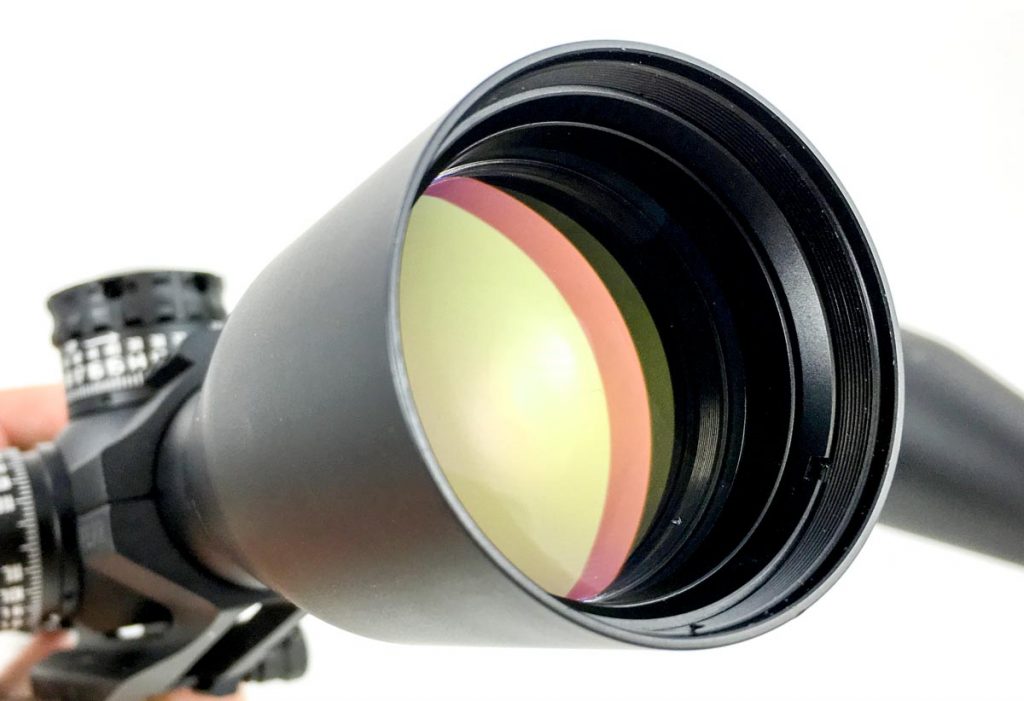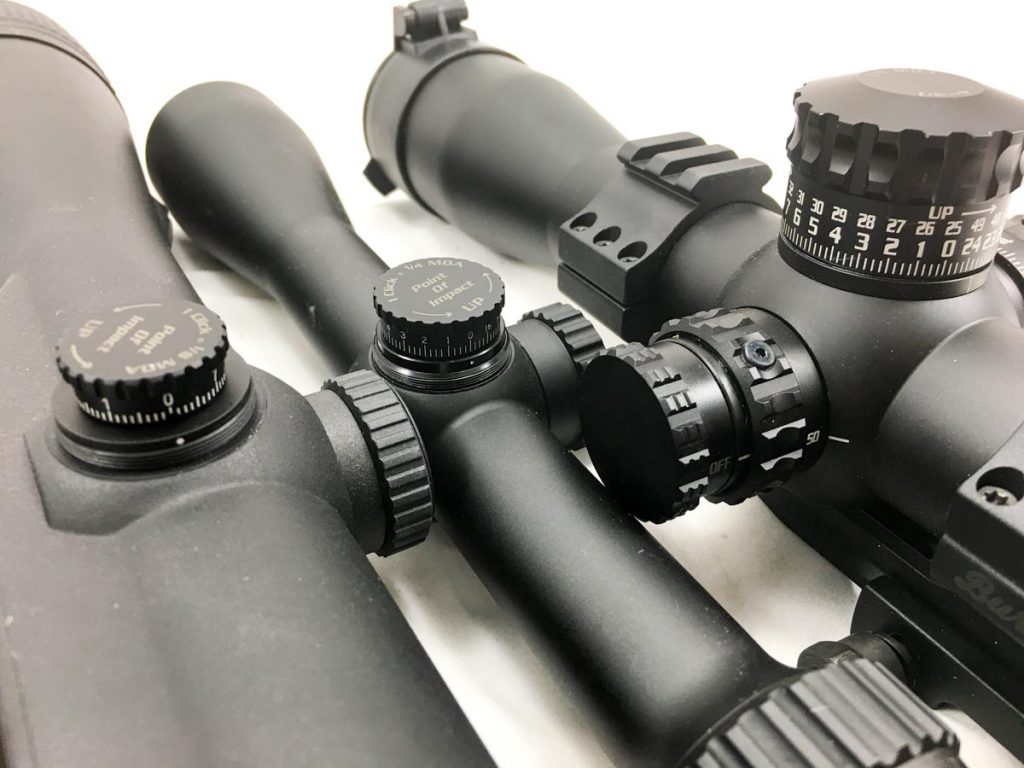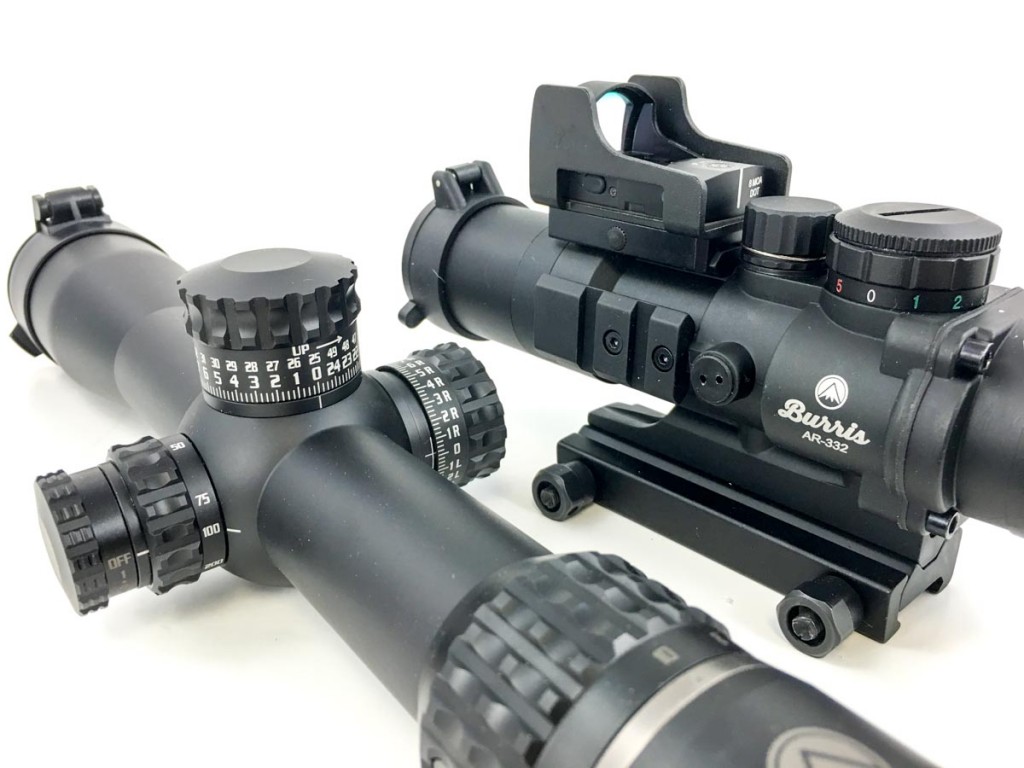So why would you want or need a very high magnification scope? There are two related reasons. You might need to see and hit a reasonably-sized target at very long range, or you might need to be able to see and hit a much smaller target at shorter ranges.
Burris Optics
Show First
Optics Buying Guide: Holographic and Red Dot Optics
BY Tom McHale Published: September 12, 2016 { 14 comments }In this episode of the optics buying guide, we’re going to get a little bit geeky, but still practical, about the different types of “red dots” and how one might use them.
Optics Buying Guide: Finding Range With A Scope
BY Tom McHale Published: August 16, 2016 { 8 comments }You can figure out how far away an object is using your scope, provided its reticle has markings in mil dots or minutes of angle.
Optics Buying Guide: How To Properly Zero Your Scope
BY Tom McHale Published: August 2, 2016 { 11 comments }Simply put, the process of zeroing a scope matches the point of aim to the actual point of impact. Put differently, the process ensures that a bullet lands exactly where you put the crosshairs
Optics Buying Guide: Scope Mounts
BY Tom McHale Published: July 14, 2016 { 5 comments }Let’s take a quick look at scope mounts. This is important as your mounts must perfectly align the scope to the bore, and be able to take the abuse of recoil.
Red Dots vs. Magnified Scopes: Which Tactical Optic Is Right For You?
BY Clay Martin Published: June 28, 2016 { 28 comments }I hate to kill a sacred cow for all you tactical ninjas out there, but in most cases a magnified optic is better than a red dot.
Optics Buying Guide: Top Must-Know Terms for Picking the Right Scope
BY Tom McHale Published: June 13, 2016 { 7 comments }When it comes to buying a scope, it can be easy to be completely overwhelmed by all the technical terms you see. So, what do you do? Maybe take a look at a glossary?
Optics Buying Guide: Scope Reticles
BY Tom McHale Published: May 13, 2016 { 2 comments }I’ll bet most of us tend to give only passing thought to reticle selection, but there’s a reason that there are somewhere over 96.2 billion reticle designs floating around out there. They’re designed for specific purposes.
Optics Buying Guide: Hold-Off Reticles vs. Adjustable Turrets
BY Tom McHale Published: May 13, 2016 { 2 comments }You have to account for two variables in long range shooting – distance and lateral movement from the wind and other factors.
Optics Buying Guide: Iron Sights, Red Dots, and Scopes
BY Tom McHale Published: May 13, 2016 { 26 comments }Choosing the right type of sights and optics can be a bit of a mystery. We’re going to take a look at iron sights, red dots, and scopes and break down their strengths and weaknesses. If you’re making a decision about sighting systems, start with this buying guide.

